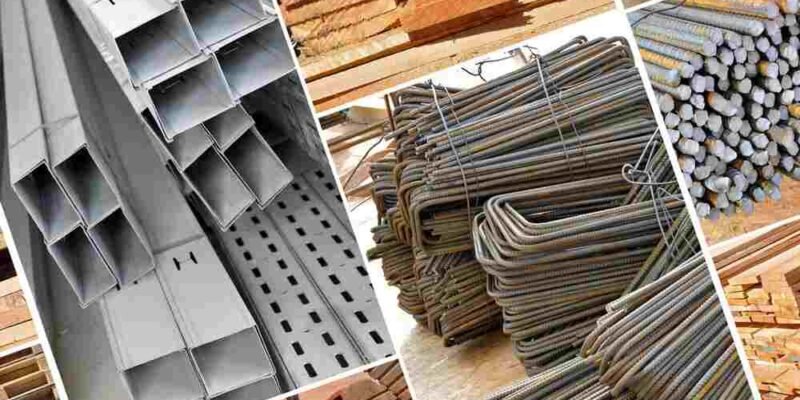The constructing substances industry is the present process of a transformative shift, pushed via innovations that promise to reshape production practices and decorate sustainability. As technology advances and environmental concerns take middle level, new substances are emerging that offer higher overall performance, more performance, and reduced environmental impact. This weblog explores several of the most exciting traits in building substances that can revolutionize the enterprise.
Advanced Sustainable Materials
Recycled and Upcycled Materials
One of the most well-known traits of building materials is the usage of recycled and upcycled products. Recycled metal, glass, and plastic are not only exceptional for lowering the decision for virgin belongings but also for lowering the quantity of waste despatched to landfills. These substances are increasingly being applied in the advent of lengthy-lasting and environmentally pleasant systems. BIM Services are critical in integrating those sustainable substances into present-day construction initiatives by optimizing layout and construction techniques. For example, recycled metallic is thought for its excessive power-to-weight ratio and sustainability, making it a favored choice for current building projects.
Bio-Based Materials
Bio-based total substances, including bamboo, cork, and hempcrete, are gaining traction because of their renewable nature and decreased environmental footprint. Bamboo, for example, is a quick-growing plant that can be harvested without inflicting good-sized ecological damage. Cork is another green cloth harvested from the bark of cork, which is very good and can regrow over the years. Crafted from hemp fibers and lime, hempcrete provides extraordinary insulation homes and contributes to carbon sequestration.
Innovative Concrete
Concrete, a staple in creation, is evolving with new technologies. Self-healing concrete is one of the most groundbreaking improvements, incorporating organisms that prompt. At the same time, cracks form, filling them with calcium carbonate. This extends the lifespan of structures and reduces preservation fees. Additionally, ultra-lightweight concrete is being developed to reduce system weight and transportation costs.
Smart Materials and Technologies
Thermochromic and Photochromic Materials
Smart substances are revolutionizing how houses interact with their environments. Companies like Pickle Roofing Solutions are exploring the potential of thermochromic and photochromic materials to enhance home energy efficiency and comfort. Thermochromic substances can adjust their color based on temperature fluctuations, improving power performance by lowering heat absorption. Photochromic materials, on the other hand, alter their tint in response to light changes, enhancing indoor comfort and reducing glare.
Self-Cleaning Surfaces
Self-cleaning surfaces are every other innovation that simplifies renovation and prolongs the lifespan of homes. These substances use photocatalytic coatings to break down natural dirt and grime while exposed to sunlight, maintaining surfaces smooth with minimal effort. This technology especially benefits facades and roofing materials, decreasing the need for ordinary cleansing and maintenance.
Nanotechnology in Building Materials
Nanotechnology is making waves inside the building substances region by improving residences at a microscopic stage. Nanomaterials can enhance electricity, insulation, and stain resistance. For example, nano-coatings can make surfaces extra-proof against scratches and stains. At the same time, nanoparticle-stronger insulation materials offer advanced thermal performance without growing thickness.
High-Performance Insulation Materials
Aerogel Insulation
Aerogel, known for its ultra-lightweight and enormously insulating residences, is remodeling insulation practices. This fabric, often called “frozen smoke,” offers tremendous thermal resistance while relatively thin. Aerogel insulation is ideal for limited space programs; however, high thermal overall performance is required.
Phase Change Materials (PCMs)
Phase exchange materials (PCMs) are designed to take in or launch warmness at some point during section transitions, including melting and solidifying. These substances help preserve stable indoor temperatures by absorbing excess warmness during the day and releasing it when temperatures drop. PCMs are increasingly used in constructing envelopes to enhance strength, performance, and luxury.
Reflective Insulation
Reflective insulation materials are gaining a reputation for potentially lessening warmth switches. By reflecting radiant heat away from the building, those materials help keep interiors cooler in warm climates and hotter in bloodless climates. Reflective insulation is usually utilized in attics and roofs to decorate well-known electricity performance.
Eco-Friendly Building Materials
Green Roofs and Living Walls
Green roofs and dwelling partitions are becoming outstanding features in city environments, offering several environmental benefits. Green roofs, blanketed with plant life, help reduce urban heat islands, improve air first-class, and offer insulation. Living walls, which include plant increase on building facades, contribute to energy financial savings and decorate the classy enchantment of homes.
Low-VOC and Non-Toxic Paints
Indoor air first-rate is a developing issue, and coffee-VOC (unstable organic compounds) and non-toxic paints are addressing this trouble. These paints release fewer harmful chemical compounds, improving indoor air quality and growing healthier dwelling spaces. Innovations in paint technology continue to be recognized for reducing environmental impact while presenting several colorings and finishes.
Sustainable Wood Products
Sustainable wood merchandise is being promoted through certification packages and accountable sourcing practices. Innovations in wood processing and remedy ensure that wood utilized in production is harvested responsibly and has a decreased environmental impact. These products encompass engineered timber substances, providing more advantageous performance and sustainability than conventional lumber.
Modular and Prefabricated Building Components
Modular Construction
Modular construction entails prefabricating, constructing components in a factory, and placing and assembling them on-site online. This method reduces construction time, minimizes waste, and may lead to price financial savings. Due to their overall performance and flexibility, modular houses have become increasingly popular for residential and industrial tasks.
3D-Printed Building Materials
3D printing technology is making its mark on the construction industry by allowing the creation of complicated and customized building materials. 3-D-revealed additives may be produced on the website, decreasing transportation charges and fabric waste. This generation additionally allows for progressive designs and structural elements that were formerly hard to attain.
Innovations in Structural Materials
High-Strength Alloys and Composites
Advancements in structural materials, together with excessive-power alloys and fiber-strengthened composites, are enhancing the performance and sturdiness of homes. High-energy steel and composite substances provide advanced strength-to-weight ratios, taking into consideration more flexible and resilient structures.
Adaptive Building Materials
Adaptive constructing substances are designed to adjust their residences in response to environmental adjustments. These materials can improve a construction’s resilience and performance by reacting to temperature, humidity, and other elements. For instance, Stainless Steel Tubes are utilized in diverse packages for their sturdiness and capacity to face environmental stressors. At the same time, other substances that trade their thermal conductivity primarily based on temperature versions can beautify strength performance and occupant consolation.
Conclusion
The construction materials industry is witnessing a thrilling era of innovation, with new substances and technology that promise to revolutionize construction practices. From sustainable and clever materials to high-overall performance insulation and modular components, those advancements are riding the future of construction. As the enterprise evolves, embracing these innovations may be critical for achieving extra green, sustainable, and resilient homes. Continued research and development will play a pivotal position in shaping the future of constructing substances and meeting the needs of a rapidly changing world.
Do Read: The Guide to Connecticut Background Checks for Landlords













